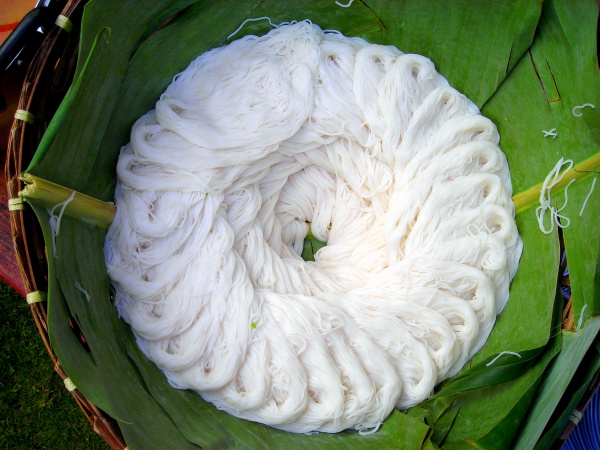Facts About Khanom chin
Khanom chin is a cherished type of fresh, thin rice noodle in Thai cuisine. These noodles are made from rice, which is sometimes fermented. The creation process involves boiling the rice and then extruding it through a sieve into boiling water to form the noodles. Despite the term "chin" meaning "Chinese" in Thai, these noodles actually trace their origins back to the Mon people of central Thailand.
Khanom chin noodles are highly versatile and feature in a variety of Thai dishes. Some popular ones include:
- Khanom Chin Nam Ya: Served with a fish-based sauce.
- Khanom Chin Nam Phrik: Accompanied by a peanut-based sauce.
- Khanom Chin Kaeng Kiao Wan Kai: Paired with green chicken curry.
There are two types of khanom chin noodles: one made with fermented flour and the other with fresh flour.
These noodles are often enjoyed with fresh vegetables and pickles, with the specific condiments varying by region. They are also a popular companion to Thai papaya salad. Similar noodles can be found in other cuisines, such as mi xian from Yunnan Province in China, num banh chok from Cambodia, and bún from Vietnam.
Different variations of khanom chin include:
- Khanom Chin Nam Ya: Noodles with fish curry.
- Khanom Chin Nam Ngiao: A noodle soup from northern Thailand.
- Khanom Chin Kai Khua: Noodles with stir-fried chicken.
Additionally, there are analogous dishes from neighboring countries, such as Khao Poon from Laos, Mohinga from Myanmar, and Bún Chả from Vietnam.

 Cambodia
Cambodia